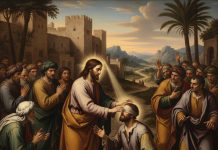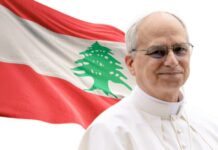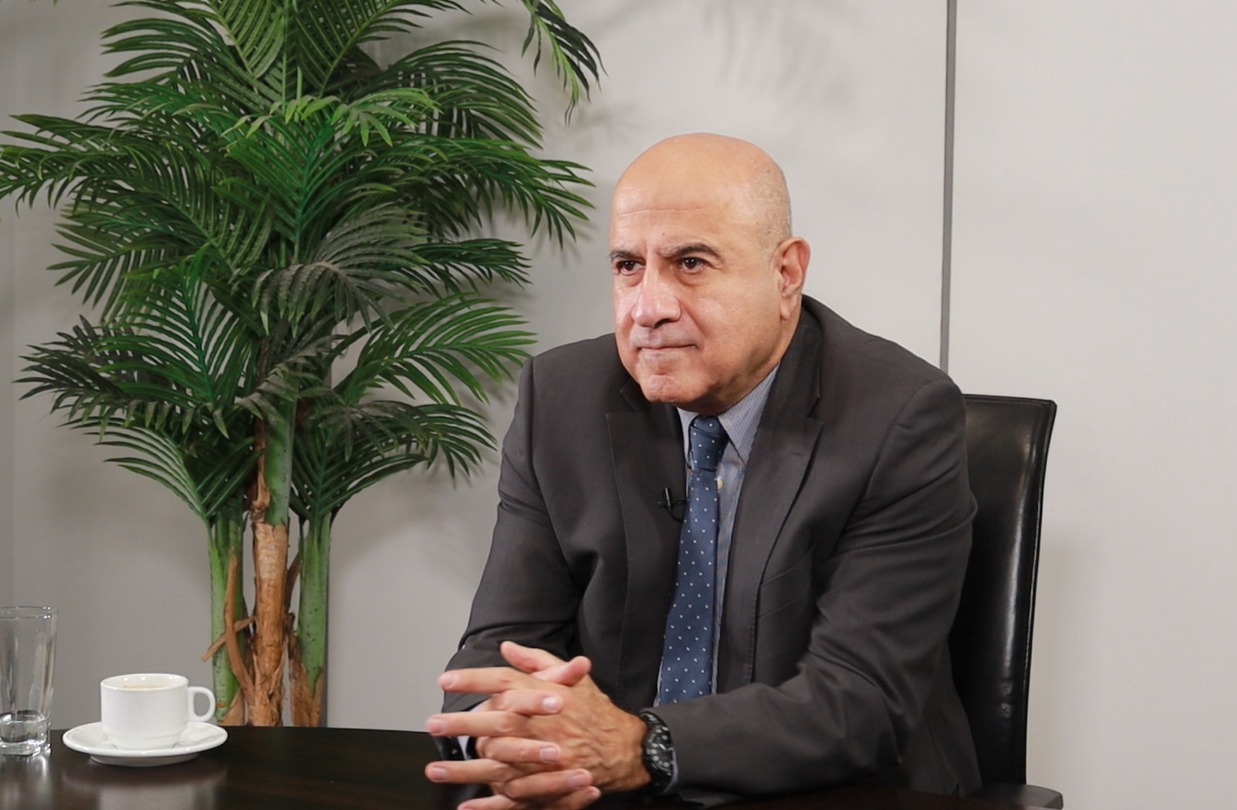في تركيا ولبنان، سيجد البابا ليو أطلالاً وجذوراً للإيمان الكاثوليكي
السفير ألبرتو إم. فرنانديز/مجلة ناشيونال كاثوليك ريجيستر/13 تشرين الثاني/2025/
تعليق: تركيا خالية إلى حد كبير من المسيحية، بينما لا يزال الوجود المسيحي في لبنان كبير.
(ترجمة من الإنكليزية بحرية بواسطة الياس بجاني)
In Turkey and Lebanon, Pope Leo Will Find Ruins and Roots of Catholic Faith
Alberto M. Fernandez//National Catholic RegisterNovember 13/2025
COMMENTARY: Turkey is largely bereft of Christianity, while Lebanon still has a vibrant Christian presence.
Pope Leo XIV’s first overseas trip will take him to two ancient, historic lands, both lands of the Bible and of the early Church. But Turkey and Lebanon are connected to each other by a difficult, shared past and present sharp contrasts today. Ottoman Turkey ruled what is now Lebanon for more than 400 years, and Ottoman rule on Mount Lebanon ended in 1918, amid a wartime famine that killed hundreds of thousands of people, most of them Maronite Christians. Turkey today is a dynamic, growing “middle power” aggressively projecting its influence, including in Africa and Central Asia. It is a key NATO member and plays an important mediating role in various conflicts, while intervening in others. The country’s leader, President Recep Tayyip Erdoğan, is seen as both a capable visionary and power player and an intolerant authoritarian figure cracking down on internal political dissent.
When Pope Paul VI became the first pope to visit Turkey in 1967, he brought with him some of the Ottoman battle flags captured at the great Christian victory at Lepanto, returning them to the Turks as a gesture of reconciliation. But Turkey under Erdoğan is an Islamist revisionist power, not only glorying in its imperial past but aggressively seeking to spread Islam worldwide.
While restricting Christian missionary activity and turning not one but several historic Byzantine churches back into mosques, Turkey’s official religious affairs office Diyanet takes advantage of Western freedoms, funding and controlling hundreds of mosques in Western countries, including a massive Ottoman-style structure in suburban Maryland just outside Washington, D.C. And while there is little doubt that the Turkish government will be gracious hosts to the Holy Father, anti-Christian (and antisemitic and anti-Western) sentiment is common in Erdoğan’s Turkey and often abetted by those in power. Turkey’s Christian population is tiny, a few hundred thousand people, less than 0.5% of the country’s 87 million people. Anatolia, the Asian mainland of modern Turkey, had a Christian population of perhaps 20% in 1915, but that is all gone.
Hundreds of thousands of Christians were massacred by the Ottomans in Anatolia during the First World War — what the world condemns, and the Turkish government still denies, as the Armenian, Syriac and Pontic (Greek) genocides. The Pope will meet with leaders of the tiny Greek, Armenian and Syriac Christian communities in Istanbul, including visiting the Syrian Orthodox Church of Mor Efrem (St. Ephrem the Syrian), the only new church (opened in 2023) built in Turkey in more than 100 years. When Pope Leo visits the famed Blue Mosque in Istanbul’s Sultanahmet neighborhood, he will see looming almost next door the Ayasofya Mosque — for centuries the largest church in Christendom as Hagia Sophia — which was once a museum but was turned into a mosque again in 2020 in an act of blatant populist Islamist chauvinism.
Ayasofya was once, in a way, a “Catholic” basilica, in that the Patriarchate of Constantinople was at the time of the city’s taking in 1453 in full communion with Rome (as a result of the Council of Florence), as were the last two emperors of Byzantium. One of the first acts of the victorious Mehmet the Conqueror was to appoint a new Greek Orthodox patriarch hostile to union with Rome. Pope Leo will not visit Ayasofya, in likely deference to the Orthodox. In 1967, Pope Paul VI was said to have committed a diplomatic faux pas when he prayed while visiting the then church-turned-mosque-turned-museum. It was the first open Catholic prayer in that sacred space for more than 500 years. When Pope Leo visits the town of Iznik (ancient Nicaea) to commemorate the 1,700th anniversary of the ecumenical council held there, he won’t be holding a meeting at the place where the council was actually held. He can’t. That would be the Ayasofya basilica of Iznik, which was also turned into a mosque in 2011. There is no real Christian community remaining in the city.
If Turkey is dynamic, growing and mostly bereft of Christianity, Lebanon is the opposite. The country is, and has been for years, in deep economic and social crisis. Much of the country’s youth is fleeing, including its Christian youth. The country is dying from political neglect, withering from inflation, unemployment, crime and war. Informally (there is no official census), Christians are still about a third of Lebanon’s population of about 6 million people. While Turkey’s Christian footprint is all too often in the past, archaeological or ancient, in Lebanon there are still all the elements that make up a vibrant, living Christian — especially Maronite Catholic — presence. Christians still have half the Parliament seats and hold key government positions, including president of the republic and commander of the Lebanese Armed Forces. The Christian influence on Lebanese society is still palpable. While Turkey houses a miniscule Christian remnant, Lebanon’s Christian community is still substantial, still viable, if deeply threatened by circumstances. There are still many towns and villages that are almost entirely Christian, as is a good portion of the Mount Lebanon region stretching from East Beirut to the mountains near the Muslim town of Tripoli to the north. This is the last remaining Christian heartland in West Asia.
Lebanon is in a way what Turkey used to be before 1915, a country with a significant Christian population at great risk of further decline and disappearance. While no one is expecting Christian massacres in Lebanon, the danger is that economic crisis, inflation and insecurity will bring about the disappearance of an ancient Christian community just the same. Pope Leo will encounter Islam and engage in interfaith outreach in both countries. His engagement with Christians will be slightly different. In Turkey, Pope Leo seeks to fan the embers of a dying flame, while in Lebanon he aims to secure the survival of a deeply rooted, living tree, now buffeted by gathering storms.
https://www.ncregister.com/commentaries/pope-leo-visits-turkey-lebanon-ruins-roots-christian-faith
**Alberto M. Fernandez Alberto M. Fernandez is a former U.S. diplomat and a contributor at EWTN News.
في تركيا ولبنان، سيجد البابا ليو أطلالاً وجذوراً للإيمان الكاثوليكي
.السفير ألبرتو إم. فرنانديز/مجلة ناشيونال كاثوليك ريجيستر/13 تشرين الثاني/2025/
تعليق: تركيا خالية إلى حد كبير من المسيحية، بينما لا يزال الوجود المسيحي في لبنان كبير.
(ترجمة من الإنكليزية بحرية بواسطة الياس بجاني)
إن أول رحلة للبابا ليو الرابع عشر إلى الخارج ستأخذه إلى بلدين عريقين وتاريخيين، وكلاهما من أراضي الكتاب المقدس والكنيسة المبكرة. لكن تركيا ولبنان تربطهما ببعضهما البعض ماضٍ مشترك وصعب وتناقضات حادة في الوقت الحاضر. لقد حكمت تركيا العثمانية ما يُعرف الآن بلبنان لأكثر من 400 عام، وانتهى الحكم العثماني على جبل لبنان في عام 1918، وسط مجاعة زمن الحرب التي قتلت مئات الآلاف من الأشخاص، معظمهم من المسيحيين الموارنة.
تُعد تركيا اليوم “قوة متوسطة” ديناميكية ومتنامية تعمل بقوة على مد نفوذها، بما في ذلك في إفريقيا وآسيا الوسطى. إنها عضو رئيسي في حلف شمال الأطلسي (الناتو) وتلعب دورًا وسيطًا مهمًا في صراعات مختلفة، بينما تتدخل في صراعات أخرى. يُنظر إلى زعيم البلاد، الرئيس رجب طيب أردوغان، على أنه شخصية قادرة وذات رؤية ولاعب قوى، وفي نفس الوقت كشخصية استبدادية وغير متسامحة تقمع المعارضة السياسية الداخلية.
عندما أصبح البابا بولس السادس أول بابا يزور تركيا في عام 1967، أحضر معه بعض الأعلام العثمانية التي استُولي عليها في الانتصار المسيحي العظيم في ليبانتو، وأعادها إلى الأتراك كبادرة مصالحة. لكن تركيا تحت حكم أردوغان هي قوة إسلاموية تحريفية، لا تمجد ماضيها الإمبراطوري فحسب، بل تسعى بقوة لنشر الإسلام في جميع أنحاء العالم.
بينما تقيّد تركيا النشاط التبشيري المسيحي وتحوّل ليس كنيسة واحدة فحسب، بل العديد من الكنائس البيزنطية التاريخية إلى مساجد، يستغل مكتب الشؤون الدينية الرسمي التركي (ديانت) الحريات الغربية، لتمويل والسيطرة على مئات المساجد في الدول الغربية، بما في ذلك بناء ضخم على الطراز العثماني في إحدى ضواحي ميريلاند خارج واشنطن العاصمة مباشرة. وبينما لا يوجد شك في أن الحكومة التركية ستكون مضيفة كريمة للأب الأقدس، فإن المشاعر المناهضة للمسيحية (والمعاداة للسامية والمناهضة للغرب) شائعة في تركيا أردوغان وغالبًا ما يتم تحريضها من قبل من هم في السلطة.
إن عدد السكان المسيحيين في تركيا ضئيل، بضع مئات الآلاف من الأشخاص، أي أقل من 0.5% من سكان البلاد البالغ عددهم 87 مليون نسمة. كانت الأناضول، البر الرئيسي الآسيوي لتركيا الحديثة، تضم ما يقرب من 20% من السكان المسيحيين في عام 1915، لكن كل ذلك قد زال.
تعرض مئات الآلاف من المسيحيين للمذابح على يد العثمانيين في الأناضول خلال الحرب العالمية الأولى – وهو ما يدينه العالم، وما لا تزال الحكومة التركية تنكره، باعتباره إبادات جماعية للأرمن والسريان والبنطيين (اليونانيين). سيلتقي البابا بقادة الجاليات المسيحية اليونانية والأرمنية والسريانية الصغيرة في إسطنبول، بما في ذلك زيارة الكنيسة السريانية الأرثوذكسية لمار إفرام (القديس إفرام السرياني)، وهي الكنيسة الجديدة الوحيدة (التي افتتحت في عام 2023) التي بُنيت في تركيا منذ أكثر من 100 عام.
عندما يزور البابا ليو الجامع الأزرق الشهير في حي السلطان أحمد في إسطنبول، سيرى يقبع بجواره مباشرة جامع آيا صوفيا – الذي كان لقرون أكبر كنيسة في العالم المسيحي باسم آيا صوفيا – والذي كان في السابق متحفًا ولكنه تحول إلى مسجد مرة أخرى في عام 2020 في عمل من أعمال الشوفينية الإسلاموية الشعبوية الكانت آيا صوفيا، بطريقة ما، “بازيليكا كاثوليكية”، حيث كانت بطريركية القسطنطينية في وقت سقوط المدينة عام 1453 في شركة كاملة مع روما (نتيجة لمجمع فلورنسا)، كما كان آخر إمبراطورين لبيزنطة. كان أحد الإجراءات الأولى التي قام بها محمد الفاتح المنتصر هو تعيين بطريرك يوناني أرثوذكسي جديد معادٍ للاتحاد مع روما.
من المرجح أن البابا ليو لن يزور آيا صوفيا، احترامًا للأرثوذكس. قيل إن البابا بولس السادس في عام 1967 ارتكب خطأً دبلوماسيًا عندما صلى أثناء زيارته لما كان آنذاك كنيسة تحولت إلى مسجد ثم إلى متحف. كانت تلك أول صلاة كاثوليكية علنية في ذلك المكان المقدس منذ أكثر من 500 عام.
عندما يزور البابا ليو مدينة إزنيق (نيقية القديمة) لإحياء الذكرى 1700 للمجمع المسكوني الذي عُقد هناك، لن يعقد اجتماعًا في المكان الذي عُقد فيه المجمع بالفعل. لا يمكنه ذلك. سيكون ذلك بازيليكا آيا صوفيا في إزنيق، والتي تحولت أيضًا إلى مسجد في عام 2011. لم يعد هناك أي جالية مسيحية حقيقية باقية في المدينة.
إذا كانت تركيا ديناميكية ومتنامية وخالية في الغالب من المسيحية، فإن لبنان هو العكس تمامًا. تمر البلاد، ومنذ سنوات، بأزمة اقتصادية واجتماعية عميقة. يفر جزء كبير من شباب البلاد، بما في ذلك شبابها المسيحي. البلاد تموت بسبب الإهمال السياسي، وتذبل من التضخم والبطالة والجريمة والحرب. بشكل غير رسمي (لا يوجد إحصاء رسمي)، لا يزال المسيحيون يمثلون حوالي ثلث سكان لبنان البالغ عددهم حوالي 6 ملايين نسمة.
بينما غالبًا ما تكون البصمة المسيحية في تركيا مجرد ماضٍ، أثري أو قديم، لا تزال جميع العناصر التي تشكل وجودًا مسيحيًا نابضًا بالحياة – خاصةً الكاثوليكي الماروني – موجودة في لبنان. لا يزال المسيحيون يمتلكون نصف مقاعد البرلمان ويشغلون مناصب حكومية رئيسية، بما في ذلك رئيس الجمهورية وقائد القوات المسلحة اللبنانية. لا يزال التأثير المسيحي على المجتمع اللبناني واضحًا. بينما تُؤوي تركيا بقايا مسيحية ضئيلة، لا يزال المجتمع المسيحي في لبنان كبيرًا، ولا يزال قابلاً للاستمرار، وإن كان مهددًا بشدة بالظروف. لا تزال هناك العديد من البلدات والقرى التي تكاد تكون مسيحية بالكامل، وكذلك جزء كبير من منطقة جبل لبنان الممتدة من شرق بيروت إلى الجبال القريبة من مدينة طرابلس المسلمة في الشمال. هذه هي آخر قلب مسيحي متبقٍ في غرب آسيا. لبنان هو بطريقة ما ما كانت عليه تركيا قبل عام 1915، بلد ذو عدد كبير من السكان المسيحيين معرض لخطر كبير من المزيد من التدهور والزوال. وبينما لا يتوقع أحد مذابح مسيحية في لبنان، فإن الخطر يكمن في أن الأزمة الاقتصادية والتضخم وانعدام الأمن ستؤدي إلى اختفاء جالية مسيحية قديمة بنفس الطريقة. سيلتقي البابا ليو بالإسلام وينخرط في التواصل بين الأديان في كلا البلدين. سيكون تعامله مع المسيحيين مختلفًا قليلاً. في تركيا، يسعى البابا ليو إلى تأجيج جمرات شعلة تموت، بينما في لبنان يهدف إلى تأمين بقاء شجرة حية عميقة الجذور، تعصف بها الآن العواصف المتجمعة.
*ألبرتو إم. فرنانديز هو دبلوماسي أمريكي سابق وكاتب مساهم في EWTN News.





















